Basic questions
What does COP15 mean?
It is the 15th Conference of the Parties (COP) held on the subject of climate change policy, which takes place in Copenhagen in December 2009. The COP consists of more than 170 nations participation in the United Nations Framework Convention on Climate Change (UNFCCC). The parties meet annually to assess progress in dealing with climate change. In 1997, they established the Kyoto Protocol that provided obligations for developed countries to reduce their greenhouse gas emissions. Countries must sign and ratify the treaty. The US signed the Kyoto Protocol but never ratified it.
What is the UNFCCC?
The United Nations Framework Convention on Climate Change (UNFCCC) is an international treaty produced by the UN Conference on Environment and Development (UNCED), also known as the Earth Summit (Rio 1992), with the aim of stabilizing greenhouse gas (GHG) concentrations in the atmosphere to a level that does not interfere with the natural variability of the climate system.
Why COP15?
The Kyoto Protocol (http://unfccc.int/kyoto_protocol/items/2830.php) expires in 2012. Copenhagen should deliver a protocol that substitutes Kyoto’s, although most leaders already concede it will not happen. In the US, ratification needs 2/3 of the senate approval, which means 67 votes out of 100.
How is the conference organized?
The COP is the “supreme body” of the Convention. The CMP is the “supreme body” of the Kyoto Protocol. There are two permanent subsidiary bodies: the Subsidiary Body for Scientific and Technological Advice (SBSTA) and the Subsidiary Body for Implementation (SBI).(http://unfccc.int/essential_background/convention/convention_bodies/items/2629.php)
The Copenhagen meeting primarily encompasses the 15th Conference of the Parties (COP), the 5th Meeting of the Parties to the Kyoto Protocol (CMP), the 31st meeting Subsidiary Bodies meetings, and a series of workshops and side events that multiple institutions and organizations hold in parallel to the COP15. The COP, CMP, SBSTA, and SBI hold their meetings and will hopefully reach some agreements. The side events and workshops can be regarded as parallel conferences and informative activities on different topics such as ecology, economy, technology, sociology, etc. Activism and civil activities will also take place.
What are the goals of COP15?
Developed countries should drop their emissions by 25-40% below 1990 levels if the world is to limit the rise in temperature by 2°C. Developing nations are required to come up with actions to limit emissions such as reducing in carbon intensity growth (see China below)
What does carbon intensity mean?
Carbon intensity is the amount of carbon emitted per unit of GDP growth. Carbon intensity in China is growing but the Chinese government offers to reduce the rate at which this carbon intensity grows. This translates to growing with lower carbon intensity, not to stop economic growth.
Figures (sorry about the format mismatch, they are from here and there)
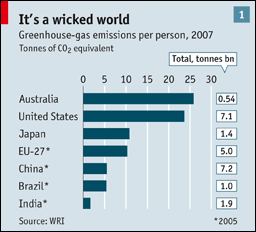

The previous graph is old (2004). Today China the is largest emitter.
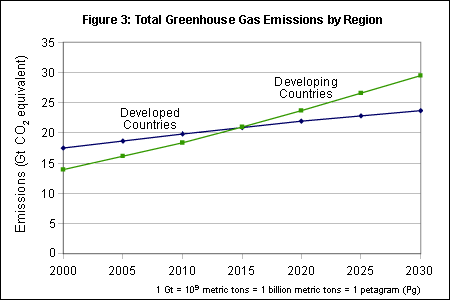
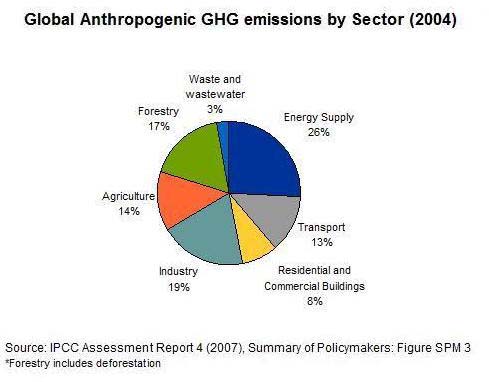
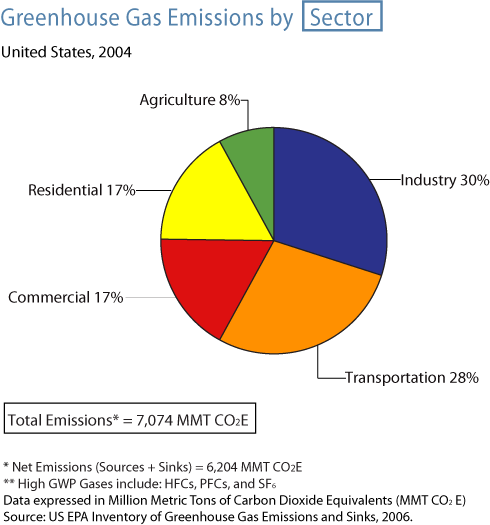
What emission targets are the countries offering in Copenhagen? (under construction)
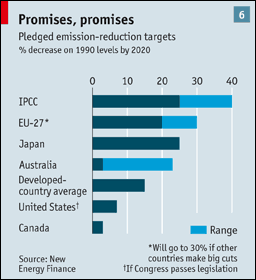
China (president Hu Jintao)
China is the largest world carbon emitter with emissions per capita of 5.5 Tones. China already has already introduced significant emission-cutting measures (bottom-up approach) and offers to reduce the growth of its carbon intensity by 40-45% by 2025
India (president Manmohan Singh)
India is the fourth largest carbon emitter, even though its emission’s per head are only 1.7 Tones. India is also using a bottom up approach voluntarily undertaking measures to curb its emissions to 25% by 2020 compared to 2005 levels.
USA,
The USA is the second largest emitter. Obama will offer the following emission cuts in Copenhagen:
17% of 2005 level (3.4% of 1990) by 2020
30% of 2005 level (18.5% of 1990) by 2025
83% of 2005 level (80.2% of 1990) by 2050
Australia
Target of cutting 5-25% carbon emissions of 2000 levels by 2020.
EU
30-40% of 1990 by 2020 (depending on Copenhagen)
Canada
Around 4% of 1990 b 2020.
Why is the baseline year relevant when talking about emission targets?
When a country offers a given reduction, it is actually committing to a smaller cut if it uses the 2005 baseline instead of 1990’s.
Suppose a country emitted 100 Gt in 1990 and 130 Gt in 2005, then it proposes cutting down 35% of the 2005 emission level by 2020, which represents a total reduction of 45 Gt.
A reduction of 30 Gt of the proposed 45 Gt will put the country at the 1990 level, and only 15 Gt would count as further reduction from the 1990 level. While this represents a 35% (30/130) reduction with respect to 2005 it only represents 15% (15/100) reduction from 1990.
Cutting down emissions to 35% of 1990 levels would require a total reduction of 70 Gt instead of the proposed 45 Gt.
You can play with a target converter here: http://www.sandbagclimategame.org/tc
How does the US pass a bill?
Congress is a bicameral body composed of The House of Representatives (the House) and the Senate. The House (democratic majority) approved in June 2009 the American Clean Energy and Security Act (ACES), previously known as the Waxman-Markey climate and energy bill. The bill set a target of 17% cut on emissions of 2005 by 2020 and had provisions for a Carbon Cap-and-Trade system and green energy job creation, among others. (http://thinkcarbon.wordpress.com/2009/06/24/the-waxman-markey-bill-at-a-glance/) and (http://www.govtrack.us/congress/bill.xpd?bill=h111-2454)
The Senate needs to approve the bill by 60 out of 100 votes. The Senate did not approve this bill even though it had a democratic majority. The Senate is comprised of two senators per state regardless of their population, and they represent their states interests more that their party association. It is said that this constitution favors agriculture over other economic activities, but coal, natural gas and oil producing states also have a better chance to get the bill more to their liking. The Senate has its own climate bill known as the Boxer-Kerry Bill, with different provisions and which actually sets larger reduction target than the House’s bill: 20% emission cut respect to 2005 by 2020 (http://www.nytimes.com/cwire/2009/09/28/28climatewire-boxer-kerry-set-to-introduce-climate-bill-in-43844.html)
If the bill is not passed yet, how can Obama promise any target in Copenhagen?
EPA regulates pollutants that endanger public health and welfare. Those include gases such as carbon monoxide (CO), Ozone (O3), and nitrous oxides (NOx) but not CO2. In April 2nd 2007 the US Supreme Court ordered EPA to decide whether CO2 was a pollutant that endangers public health and welfare, in which case EPA would have regulative powers of CO2 emissions. The Bush administration largely ignored this order but this has changed with the current administration. More at http://world.globaltimes.cn/americas/2009-12/490477.html
Obama plans in Using EPA’s power to regulate CO2 emissions and meet promised reduction targets if Congress fails to pass a suitable bill.
Why people only talk about CO2 when there are other powerful GHG gasses?
The protocol targets most Greenhouse Gases (GHGs) but it measures them as CO2 –equivalents. When people talk about CO2 they generally mean CO2-equivalents
Why are people moving towards an international treaty if the science is not settled over whether global warming is actually caused by anthropogenic GHG emissions, or even happening at all?
Climate systems are complex systems full of non-linear interactions (that is with loops and feedbacks) of subsystems (ocean, land, atmosphere, cryosphere, biosphere) that react to multiple climate drivers (solar activity, greenhouse gas concentration, aerosols, etc)
Climate scientists are aware and puzzle over those complexities and the limitations of their models. It is not surprising that other scientist and the general public are utterly confused, therefore most people decide to base their opinions on what the current scientific consensus on climate change is.
There is a clear agreement among scientist that climate change is happening and that part of it is due to anthropogenic GHG emissions. Science, unlike dogma, evolves. New data, models and analysis tools are constantly produced and refined. One can argue that the scientific debate still goes on but this does not mean there is not a current scientific consensus.
The role of COP15 is to produce an international treaty, that is to create a political agreement, not to conduct a scientific discussion. The scientific discussion forum is the IPCC.
The International Panel on Climate Change (IPCC) (http://www.ipcc.ch/) was established by the UN and the World Meteorological Organization (WMO) as a body of scientists from multiple institutions around the world to conduct a scientific peer-review process of the available data on climate and to determine whether humans are actually altering its natural variability. This was an international effort with multiple American Universities and even government organizations such as the Goddard Space Institute from NASA involved. The panel concluded that there is clear evidence that humans are responsible for current trends in global warming based on actual measurements, and projected risks associated with climate change with climate models. Climate experts are aware of the limitations of their models, including the fact that there are phenomena unknown to science, so they work with a certain level of uncertainty, which can be measured to a extent.
IPCC’s credibility has been recently shaken by an anonymous release of mails from the Climate Research Unit of the University of East Anglia, one of its expert contributors. For many, the e-mails are is unequivocal proof of the fallacy of climate change. For others, a couple of e-mails out of its context have absolutely no value, or they don’t constitute enough proof to discredit a whole international effort. Conspiratorial theories abound on both sides. Unfortunately, ideological and political bias is involved in those opinions and few people can actually judge with fairness such a complex issue.
For most people it is a matter of what type of error would you rather commit, type one or type two?
CLIMATE CHANGE: TO DO OR NOT TO DO?
Decision-making under uncertainty.
|
No Climate Change |
Climate Change |
|
|
Do something (Despite uncertainties) |
TYPE 1 ERROR (Squandered resources… or maybe not: New green economy, green jobs, technology, use non-renewable resources more efficiently, other environmental benefits) |
Correct decision |
|
Do nothing |
Correct decision |
TYPE 2 ERROR: (Catastrophic consequences. Impossible or very expensive to adapt) |
Thomas Friedman expressed this very well in his New York Times op-ed http://www.nytimes.com/2009/12/09/opinion/09friedman.html?_r=2
Today emissions are 20% higher than when the Kyoto Protocol was signed in 1997. Does that mean it failed?
Yes, the Kyoto Protocol failed for multiple reasons:
1) The biggest emitters did not commit to cuts.
America, then world’s biggest emitter (today second in absolute and per capita terms), never ratified the protocol. China, world’s biggest emitter today, is not bound to produce any reduction target in its status of developing country. Australia, second emitter per person, only ratified it in 2007.
2) Countries that ratified the treaty have exported some of their dirty industry to the developing world, so overall global GHG remain the same or even increase.
3) Even individually, most countries that pledged to cut their emissions have not done it yet. For instance, Canana and Spain emit nowadays 29% and 57% more GHG than in 1990, respectively. They will, as other countries in Europe, rely on the purchase of “hot-air” credits (credits from European ex-soviet union countries, whose industries collapsed in the 1990s and find themselves with carbon credits to sell under the ETS) to meet their goals before the treaty expires in 2012.
4) There is no enforcement. If a country fails to cut its emissions it is only bound (non-legally) to reduce its emission further in the next period.
What policies can promote a shift from a high-carbon to low carbon economy?
1) Regulation (preferred by government and hated by the industry)
This is Obama’s back up plan if a Cap-and-Trade bill fails to be passed by the senate. CO2 has recently being categorized as a human pollutant, which means the EPA can issue regulations under the Clean Air Act (CAA) requiring emitters to report, apply for permits, install control technology to reduce emissions by a certain percentage, etc. Companies failing to comply with these CAA regulations would become subject to any of the enforcement options of the CAA, such as administrative fines, civil lawsuit, criminal prosecution or citizen’s lawsuit. (Courtesy of Att. Charles Irvine)
2) Imposition of a federal renewable porfolio standard on generators.
3) Carbon-pricing (preferred by economist for their market efficiency)
Renewable energies are not competitive with fossil fuels because the latter are very inexpensive relative to the energy they store. A carbon price that adds to the cost of producing and selling fossil energies is necessary in order to provide the shift.
It has been calculated that to hit the 450ppm target requires a price of $40 per tone of carbon emitted. The price is determined by politicians: The European Commission in consultation with member states in the case of UE, and Congress in the USA.
Europe’s carbon price is $13. The US does not have any yet but Congress is considering a $12 a tonne in 2012, rising to $20 in 2020.
Is this price high enough to promote renewables?
According to The Economist magazine, at $22 a tonne the price is high enough to induce power companies to switch some generation from coal to gas at the margin, but not high enough to encourage much innovation.
4) Subsidies to renewable energies (preferred by industry for the sweet money they represent)
Those policies are effective but very inefficient from the economic point of view. Examples of non-efficient renewable subsidies are Spain’s solar energy and USA’s biofuel (http://www.economist.com/specialreports/displaystory.cfm?story_id=14994818). Brazil’s current status as ethanol firs producer in the world has cost the government $16 billion in subsidies.
5) Green stimulus money in US and China to promote efficiency, electric vehicles and the upgrade the grid needs.
This is provided to save projects that are threatened by a credit crunch such as today’s. They are part of the economic stimulus to protect green jobs and industries affected by a shortage of capital. In addition, it ca be used to support R&D, which is highly needed if new forms of energy are to be developed. In addition it promotes R&D
According to America’s Energy Information Administration, a carbon price is twice as efficient as a renewable portfolio standard, and about two-and-a-half times as efficient as a renewable-energy subsidy.
How can carbon price be changed?
This can be achieved through a carbon tax or through a Cap-and-Trade system. Check:
http://www.americanprogress.org/issues/2008/01/capandtrade101.html, http://www.epa.gov/captrade/, and http://en.wikipedia.org/wiki/Emissions_trading
Are there any cap-and-trade systems in place?
Yes, there are several:
· USA’s Acid Rain Program since 1990 (regulate sulfur emissions from power plants)
· EU’s Emission Trading Scheme (ETS) since 2005.
· Australia Carbon Trading Scheme to be introduced in 2010/2012
· New Zealand Emission Trading Scheme since 2008.
How much are carbon markets worth it and how is the money used?
Carbon markets are the principal way of financing the shift from high- to low-carbon power and industrial processes in the developing world.
ETS makes up for the vast bulk of the carbon market, which will be worth around $122 billion this year.
Carbon tax or Cap-and-Trade?
Policy tools for cutting down carbon emissions are a “carbon tax” or a “cap-and-trade system”. Some countries already levy carbon taxes while others, like the US, Venezuela, and Russia have fossil fuel subsidies. A carbon tax is unlikely to be levied in the US. Many OECD governments, including the European Union (EU), Australia and New Zealand have already adopted emission trading systems. Unknown to most Americans, a Cap-and-Trade system for emissions has already a successful precedent in the US: The 1990
Amendments to the Clean Air Act and its cap-and-trade system for sulfurous emissions (acid rain). More at http://www.edf.org/page.cfm?tagID=1085 The advantage of cap-and-trade is that the marketplace (rather than the government) decides the optimum way to achieve the reductions. For the main difference among those watch this presentation by Holmes Hummel in
http://www.youtube.com/watch?v=wsS1ulVmfhU (start in minute 58) or read http://www.sciencemag.org/cgi/content/summary/314/5803/1217
Examples of the so-called “Low-hanging fruit”(existing technology that can be used)
1) Substituting traveling plug adaptors that use a copper-wire method and loss as much as 80% of the power (cost $2 a piece) by adaptors with integrated circuits that loss as little as 20%. This would save the world $2 billion a year or 13m CO2 tonnes (equivalent to closing down 8 coal-fired power plants)
2) Current possible alternatives to private cars: trains, metro, buses, bikes, walking (this in addition helps you release endorphins, makes you fit, and help you and your company save money on health bills)
3) Retrofit buildings (http://greensource.construction.com/features/0804_Currents.asp)
4) …
“…A McKinsey Global Institute study found that There are sufficient economically viable opportunities for energy-productivity improvements that could keep global energy-demand growth at less than 1 percent” per year. However, market-distorting subsidies, information gaps, agency issues, and other market inefficiencies all work against energy productivity.” (http://www.americanprogress.org/issues/2009/03/eers_efficiency.html)
Potential energy options that need further R&D
1) Nanomatechnology and energy (http://www.rice.edu/energy/research/energyprogram/nanotechnology.html)
2) CO2 to fuel (http://www.sciencedaily.com/releases/2009/12/091210162222.htm)
3)…
Will renewable The road to de-carbonize the economy does not fully rely on renewables?
Today’s renewables, alone or combined, can only meet a limited part of our energy needs. The treaty does not require facing fossils out entirely for now, rather it pushes the combination of 1)energy efficiency, 2) a portfolio of renewables, 3) traditional fossil energies coupled with Carbon Capture and Storage (CSS) technologies, and 4)existing carbon neutral energies such as nuclear.

